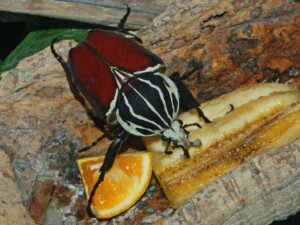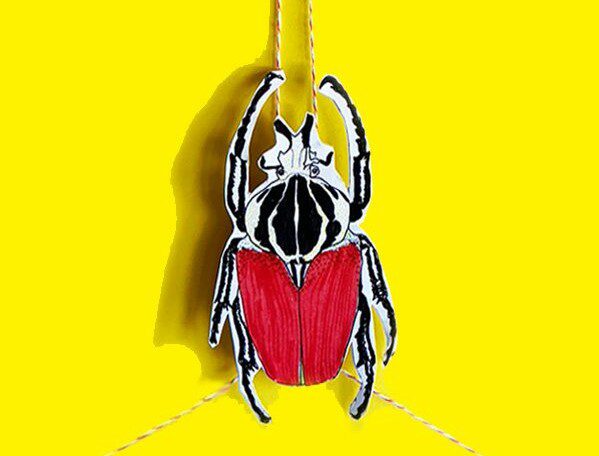Create your own climbing Goliath beetle with #MuseumMake – a fun craft activity inspired by The Powell-Cotton Museum.
Four things you should know about a Goliath beetle

Habitat
Goliath beetles can be found in many of Africa’s tropical forests in countries that include Nigeria, Cameroon, Uganda, and Western Kenya. They prefer warm climates. Their larvae are usually found underground, but the adult beetles spend their time on the ground or in trees and plants looking for food.
Appearance
Goliath beetles are among the largest insects on Earth. The male beetle has a body length of up to 11cm, and the female has a body length of about 8cm. Their size is similar to a human hand. The females range from a dark chestnut brown to silky white, but the males are normally brown/white/black or black/white. The beetles have six legs and sharp claws, which give them a strong grip when climbing trees. They have two sets of wings, but only the inner wings are used for flying. They are also very strong and an adult beetle can lift a load around 850 times heavier than their own weight.
Behaviour

Goliath beetles go through metamorphosis in stages, starting as eggs, then larvae, then pupae, and finally as adult beetles. They live up to about a year in the wild partly because they are food for a number of predators including birds, small mammals, reptiles and amphibians.
Goliath beetles are territorial. In the wild, male Goliath beetles often fight with one another using their Y-shaped horns. They tend to be aggressive when other males or rivals get into their range.
Diet
Goliath beetles are omnivores. Their diet consists of high-sugar foods such as tree sap and rotten fruits though they will also eat dung, and animal remains. They are an important part of the ecosystem as they remove excess decaying plant and animal matter from the environment.
What next?
You could
- find out how many species of Goliath beetles there are
- download our climbing critters activity and make your own Goliath beetle.


